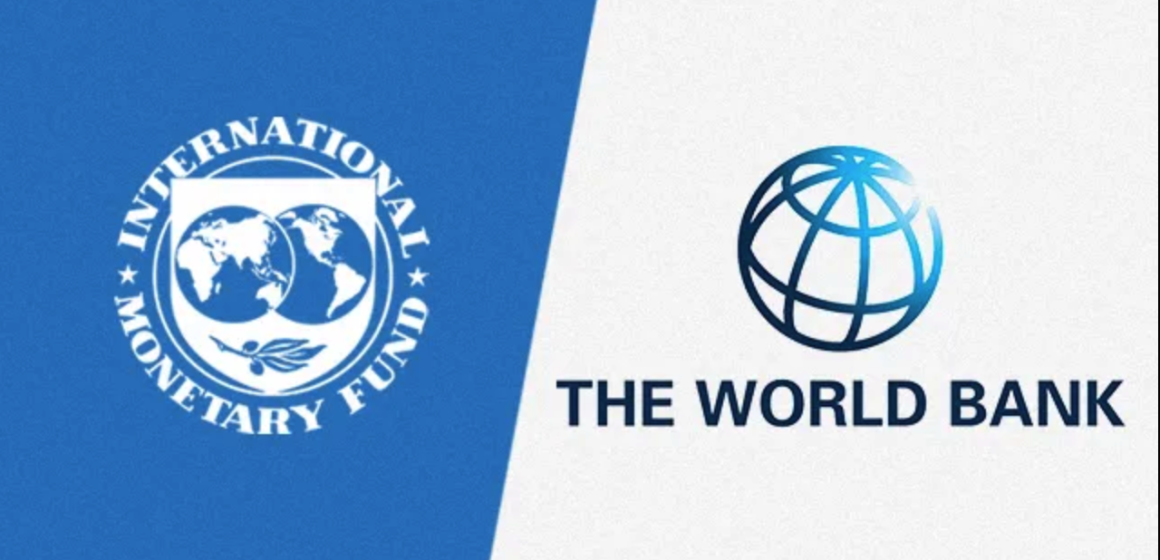|
LISTEN TO THIS THE AFRICANA VOICE ARTICLE NOW
Getting your Trinity Audio player ready...
|
Somebody once described the World Bank as a hospital and the International Monetary Fund (IMF) as an ambulance. The point was interacting with either of the world money lending institutions signified a country was in poor health, but of the two, the World Bank was perhaps a lesser problem.
The IMF and the World Bank are the most prominent international financial institutions often mentioned in the same breath. While they share certain similarities in their goals and missions, they have distinct roles and functions.
So what is the difference between the IMF and the World Bank?
The IMF and the World Bank were established at the Bretton Woods Conference in 1944 to promote global economic cooperation and development.
The Bretton Woods Conference of 1944
The Bretton Woods Conference of 1944 was a meeting of delegates from 44 allied nations held in Bretton Woods, New Hampshire, USA, in July 1944. The conference was convened to establish a new international monetary system to replace the gold standard in place since the late 19th century and broke down during the Great Depression of the 1930s.
The conference created two new international financial institutions: the International Monetary Fund (IMF) and the International Bank for Reconstruction and Development (IBRD), later known as the World Bank. The IMF was established to promote international monetary cooperation and exchange rate stability, while the IBRD, now World Bank, provided long-term financing for the reconstruction and development of war-ravaged countries.
The World Bank
While the World Bank was built to finance post-World War II reconstruction efforts, it has since become a significant source of development financing for developing countries. On the other hand, the IMF was established to promote international monetary cooperation, and its primary focus is on macroeconomic stabilization and crisis management.
The World Bank comprises five different institutions, each with its mandate.
- The International Bank for Reconstruction and Development (IBRD) provides loans and other financial assistance to middle-income countries.
- The International Development Association (IDA) provides concessional loans and grants to the world’s poorest countries.
- The International Finance Corporation (IFC) provides financing to the private sector in developing countries.
- The Multilateral Investment Guarantee Agency (MIGA) offers investors political risk insurance and credit enhancement guarantees.
- The International Centre for Settlement of Investment Disputes (ICSID) provides a forum for settling investment disputes between investors and states.
The IMF
On the other hand, the IMF is responsible for overseeing the international monetary system and providing financial assistance to countries facing balance of payments problems. It is often called upon to provide emergency financing to countries experiencing financial crises, and its loans are typically tied to conditions aimed at promoting economic stability and growth.
Regarding loans to Africa, the World Bank and the IMF have different approaches. The World Bank provides development financing to African countries through its IDA program, which offers low-interest loans and grants to the world’s poorest countries. The Bank also provides technical assistance and policy advice to promote economic growth and reduce poverty.
On the other hand, the IMF typically provides loans to African countries facing balance of payments problems or other economic crises. These loans are often tied to macroeconomic stability conditions, such as reducing government spending, increasing exports, or liberalizing trade policies. While the IMF’s loans can provide a lifeline to countries in crisis, they have been criticized for imposing harsh conditions that can exacerbate poverty and inequality.
In recent years, the IMF and the World Bank have taken steps to address some of the criticisms against them. The World Bank has increased its focus on poverty reduction and social inclusion, while the IMF has sought to make its loan conditions more flexible and better tailored to the needs of individual countries.
To recap
The IMF and the World Bank are international financial institutions with distinct roles and functions. While the World Bank provides development financing and technical assistance to promote economic growth and reduce poverty.
The IMF oversees the international monetary system and provides financial assistance to countries facing economic crises. Regarding loans to Africa, the World Bank’s IDA program offers low-interest loans and grants to the world’s poorest countries, while the IMF’s loans are typically tied to conditions aimed at promoting macroeconomic stability.
Challenge Yourself
Click the link below and take a quiz to see if you know the difference between the World Bank and IMF.






























LEAVE A COMMENT
You must be logged in to post a comment.